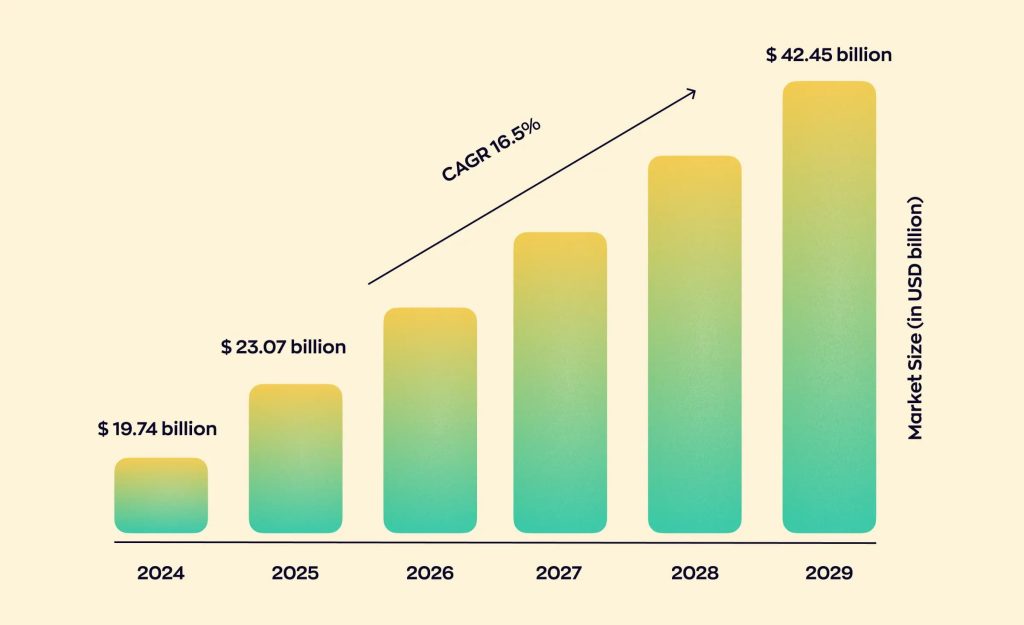In today’s fast-paced business environment, efficiency is no longer just an advantage—it’s a necessity. As companies strive to streamline their operations, reduce costs, and stay ahead of the competition, many are turning to Robotic Process Automation (RPA) as a game-changing solution. RPA allows businesses to automate repetitive tasks, freeing up valuable time for employees to focus on more strategic initiatives. One of the leaders in this field is NICE robotic process automation tools, which offer scalable solutions that integrate seamlessly into existing business infrastructures. This article delves into how RPA is unlocking new levels of efficiency for businesses and why it’s the future of business operations.
The Rise of Robotic Process Automation
Robotic Process Automation is transforming the way businesses handle mundane, time-consuming tasks. RPA uses software robots, or ‘bots’, to mimic human interactions with digital systems and applications. These bots can perform tasks such as data entry, extraction, invoice processing, and customer service responses. By automating these tasks, businesses can reduce human error, speed up operations, and ensure consistency across workflows. Companies that adopt RPA can allocate human resources to higher-value activities, such as innovation, customer relations, and strategy development, ultimately driving growth.
The demand for RPA has surged in recent years, as businesses realize the significant benefits of automation. In fact, according to research, the global RPA market is expected to reach nearly $30 billion by 2030, a clear indication that RPA is no longer a niche technology but a mainstream business solution. NICE robotic process automation tools have been at the forefront of this transformation, helping organizations from various sectors implement automation smoothly and effectively.
Benefits of RPA for Business Operations
The most apparent benefit of RPA is the increase in efficiency. Tasks that took hours to complete can now be finished in minutes or seconds. For example, financial services companies can use RPA to automate the reconciliation of financial statements, drastically reducing the time spent on manual checks. Similarly, RPA can automate patient data entry in the healthcare industry, ensuring accurate information without human intervention. These efficiency gains directly impact the bottom line, as businesses can reduce operational costs, minimize errors, and improve service delivery.
Moreover, RPA contributes to improved employee satisfaction. Eliminating repetitive and tedious tasks empowers employees to focus on more creative and intellectually stimulating work, boosting morale and increasing employee retention rates. Businesses that integrate RPA into their operations are often seen as innovative and forward-thinking, an attractive quality for top talent. The ability to offer employees a more fulfilling work experience is a competitive advantage in the modern job market.
Additionally, RPA allows for scalability. As businesses grow, their operations become more complex, and manual processes become increasingly difficult to manage. RPA provides a scalable solution that can easily adapt to increased workloads without hiring additional staff. This scalability is particularly beneficial for small and medium-sized enterprises (SMEs) that may not have the resources to expand their workforce at the same rate as their operations. By leveraging RPA, these businesses can stay nimble and agile, even as they grow.
How NICE Robotic Process Automation Tools Enhance Business Operations
NICE robotic process automation tools offer businesses a comprehensive suite of automation solutions that cater to various needs. Their RPA solutions are known for being highly customizable, allowing organizations to tailor the bots to their specific requirements. Whether automating back-office functions, customer support, or even sales and marketing tasks, NICE robotic process automation tools can be integrated seamlessly into any business environment.
One of the standout features of NICE RPA is its ability to handle structured and unstructured data. Many automation tools struggle with unstructured data, such as emails, images, or scanned documents. However, NICE’s RPA technology uses advanced machine learning algorithms to process and extract information from unstructured data sources, making it highly versatile. This capability is especially valuable in industries like healthcare, where the volume of unstructured data, such as medical records and insurance claims, is enormous.
Another key advantage of NICE’s RPA tools is their intelligent process automation (IPA) capabilities. IPA combines traditional RPA with artificial intelligence (AI) to automate more complex tasks that require decision-making. This could include analyzing customer sentiment, forecasting demand, or detecting fraud. By integrating AI with RPA, businesses can automate processes previously thought to require human judgment, further unlocking efficiencies.
Overcoming the Challenges of RPA Implementation
While RPA’s benefits are clear, its implementation can be challenging for some organizations. One of the primary hurdles businesses face is integrating RPA into existing systems. Many organizations rely on legacy systems not designed with automation in mind, making it difficult to implement RPA without significant upgrades or changes to IT infrastructure.
Fortunately, NICE robotic process automation tools are designed with integration in mind. Their solutions are built to work with a wide range of systems, from modern cloud-based applications to older legacy platforms. NICE provides comprehensive support and training to help businesses navigate the RPA adoption process, ensuring a smooth transition.
Another challenge is managing change within the organization. Automation can be resisted by employees who fear job loss or disruption. However, when implemented correctly, RPA should be viewed as a tool to augment human capabilities, not replace them. Businesses should communicate the benefits of RPA to their teams and involve them in the process from the outset. This approach fosters a culture of innovation and collaboration, where employees are excited about the possibilities RPA brings to their work.
The Future of RPA and Business Operations
As technology continues to advance, RPA’s capabilities will only grow. In the future, RPA will become even more intelligent and capable of handling more complex tasks, further enhancing business operations. Integrating AI and machine learning will allow RPA systems to learn and adapt, becoming more efficient over time. This evolution will enable businesses to automate more functions, from creative processes to strategic decision-making.
The future of business operations is undoubtedly intertwined with automation. Companies that embrace RPA will be better positioned to thrive in an increasingly competitive and fast-moving market. By unlocking the power of robotic process automation, businesses can gain a significant edge over their competitors, achieving greater efficiency, reduced costs, and improved customer satisfaction.
Conclusion
Robotic Process Automation is reshaping how businesses operate, unlocking new efficiency, accuracy, and scalability levels. With the right tools, such as NICE robotic process automation tools, organizations can automate routine tasks, improve employee satisfaction, and position themselves for future growth. As RPA continues to evolve, it will become an integral part of business strategy, driving success in the future. Embracing automation now will lead to immediate benefits and set the stage for long-term success in an increasingly automated world.
The post Unlocking Efficiency with Robotic Process Automation: The Future of Business Operations appeared first on TechNuovo | Bitesized tech news and reviews.



